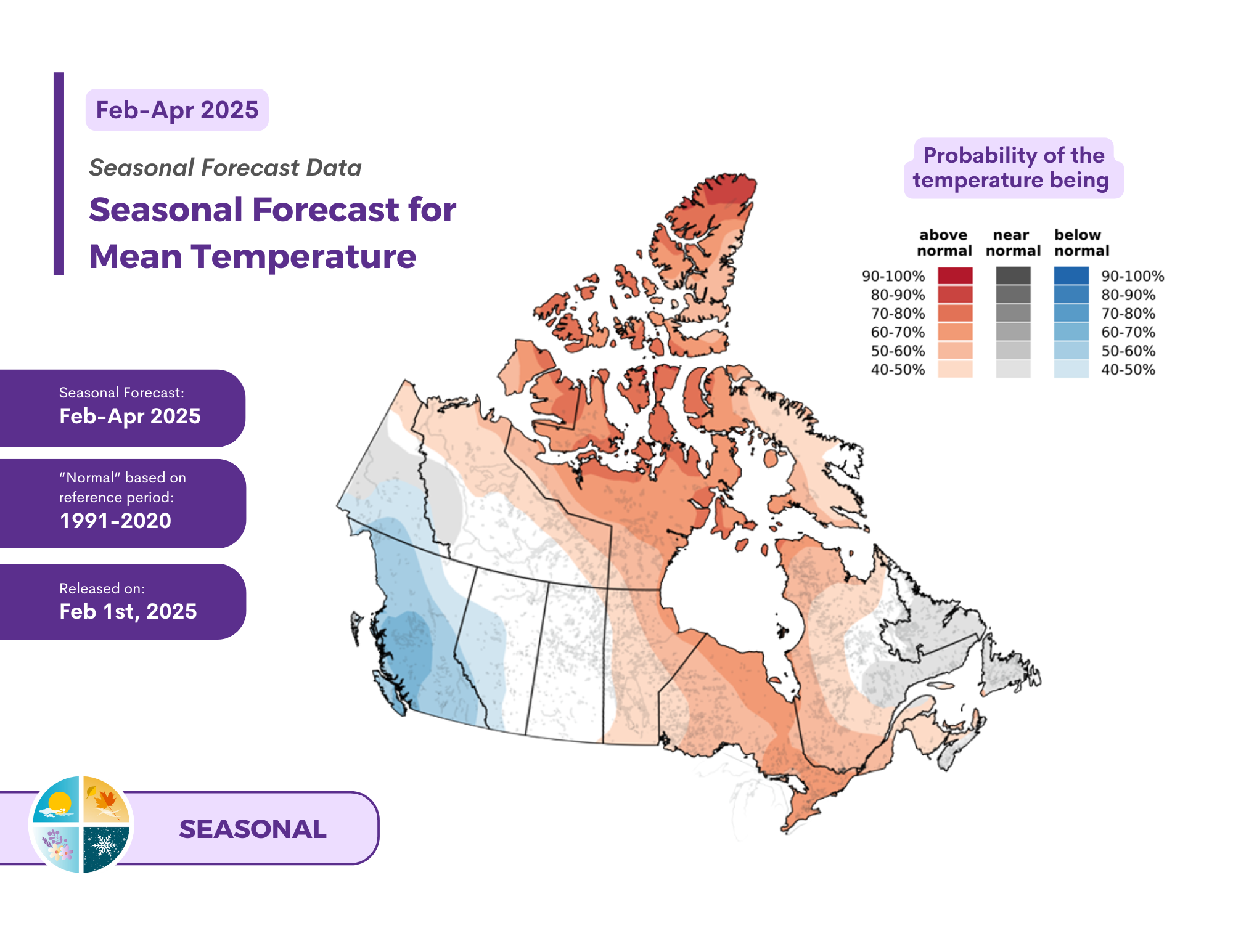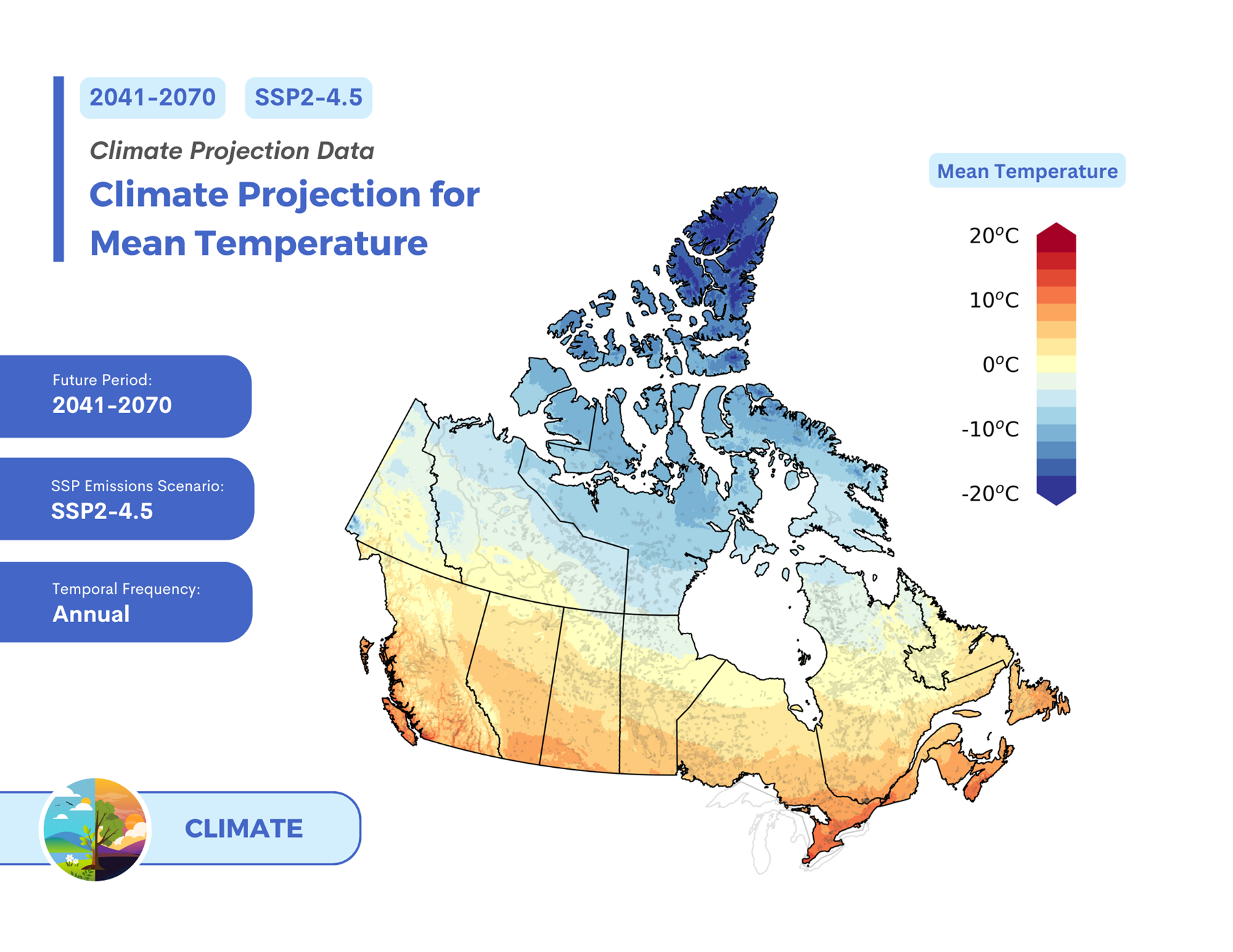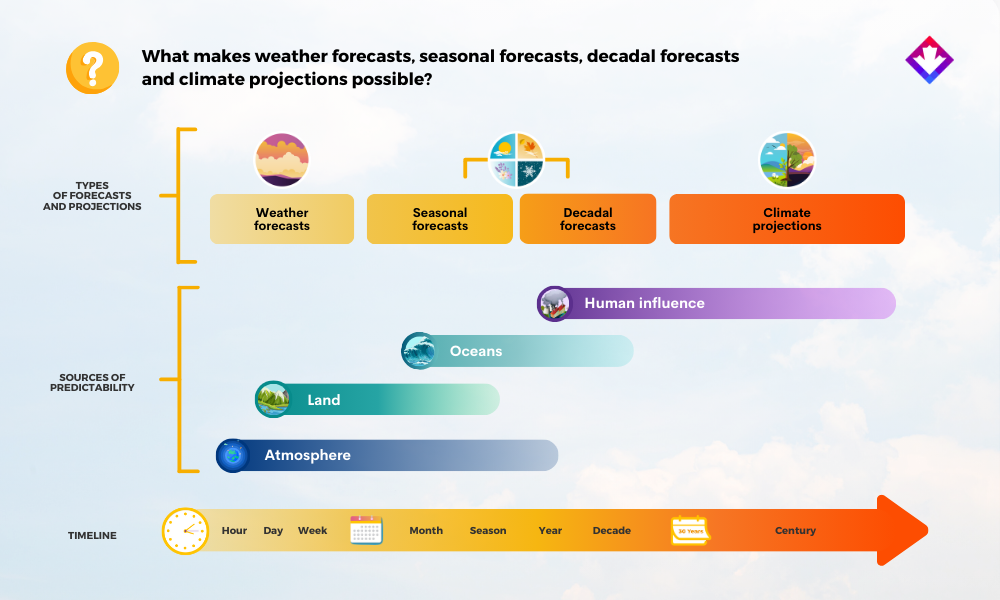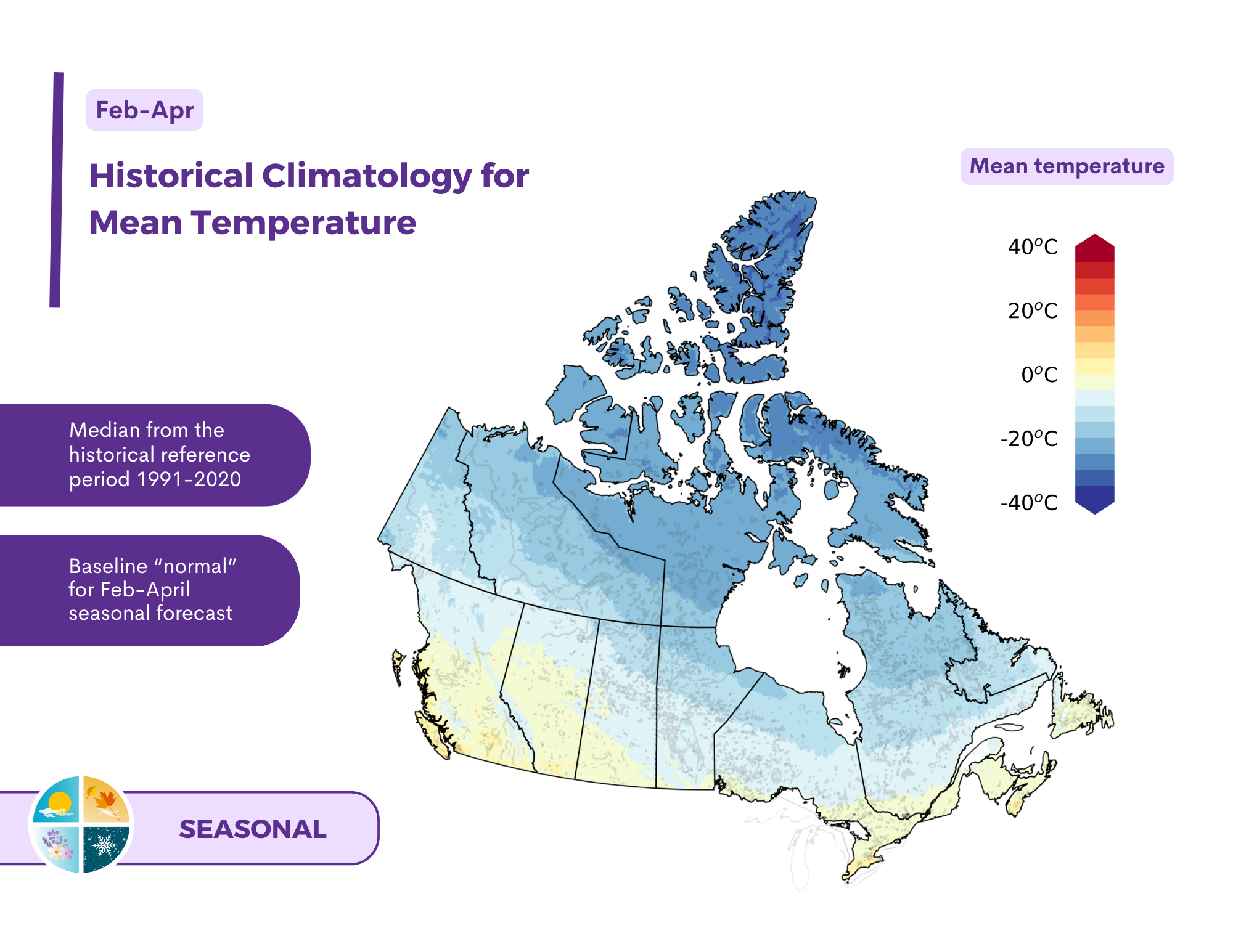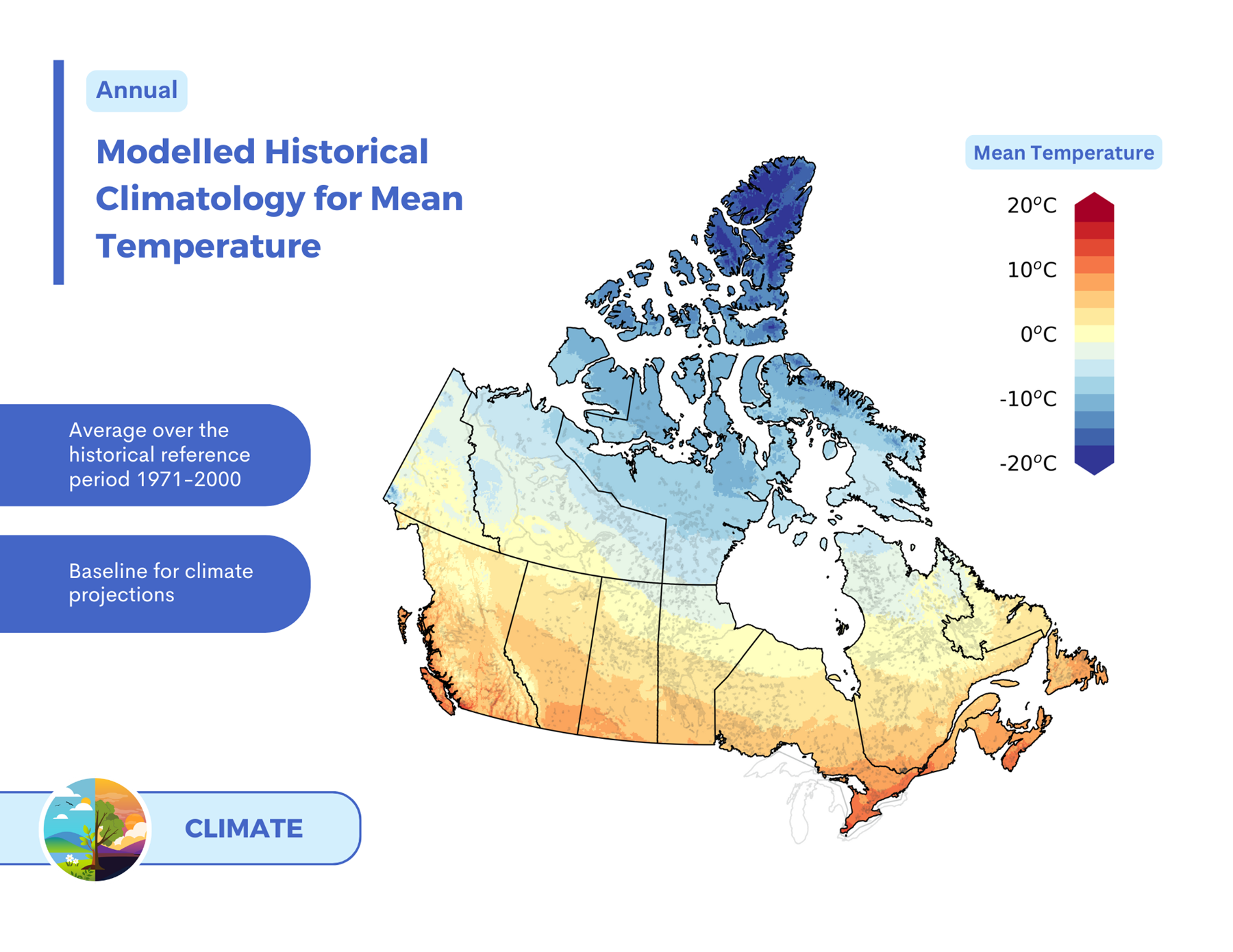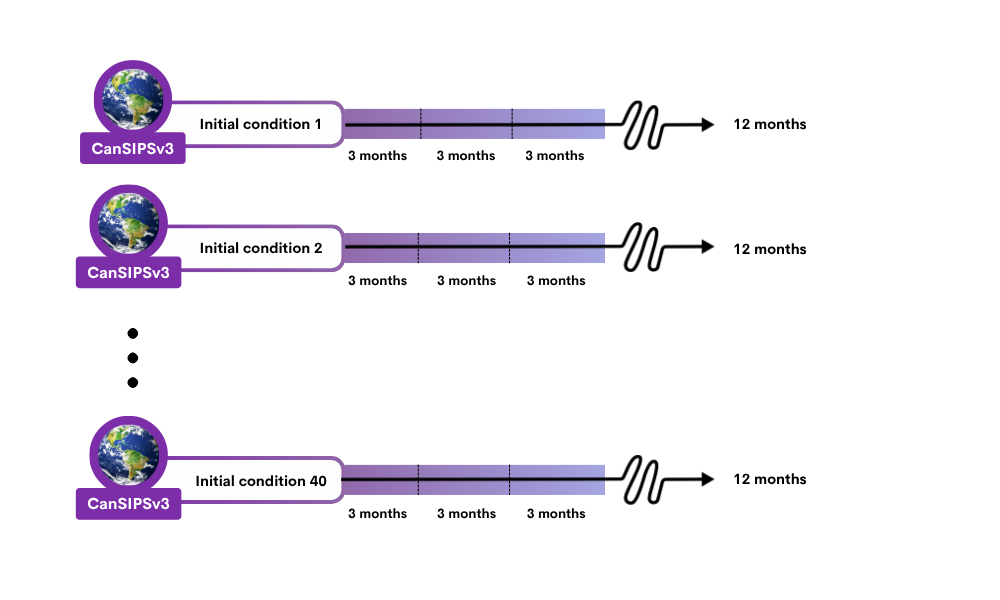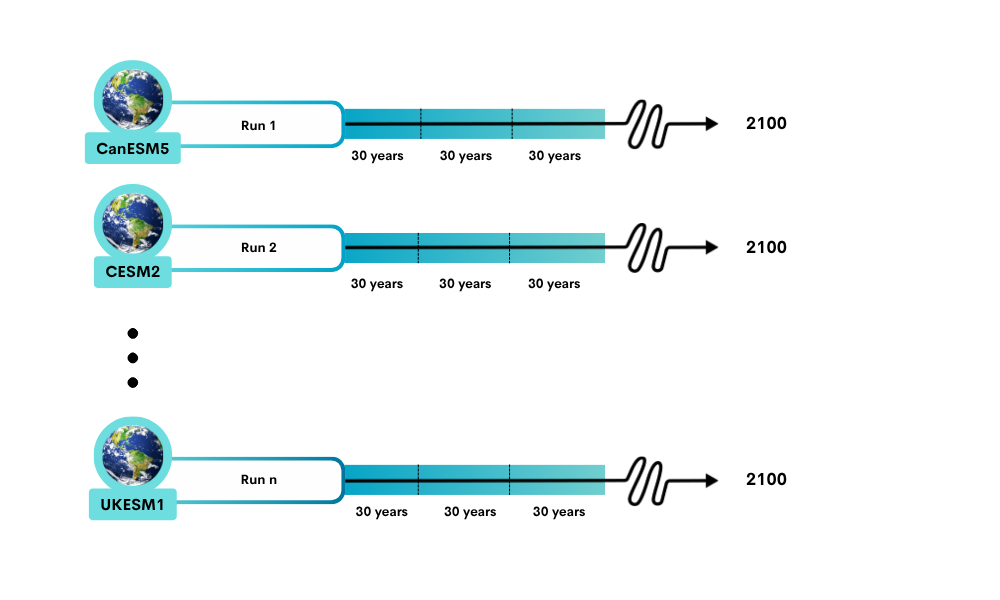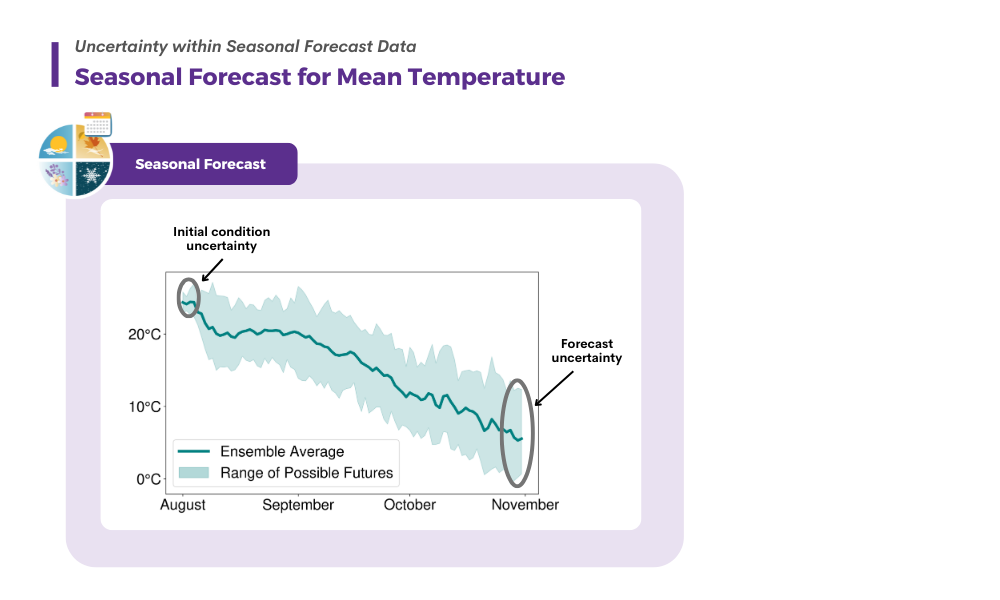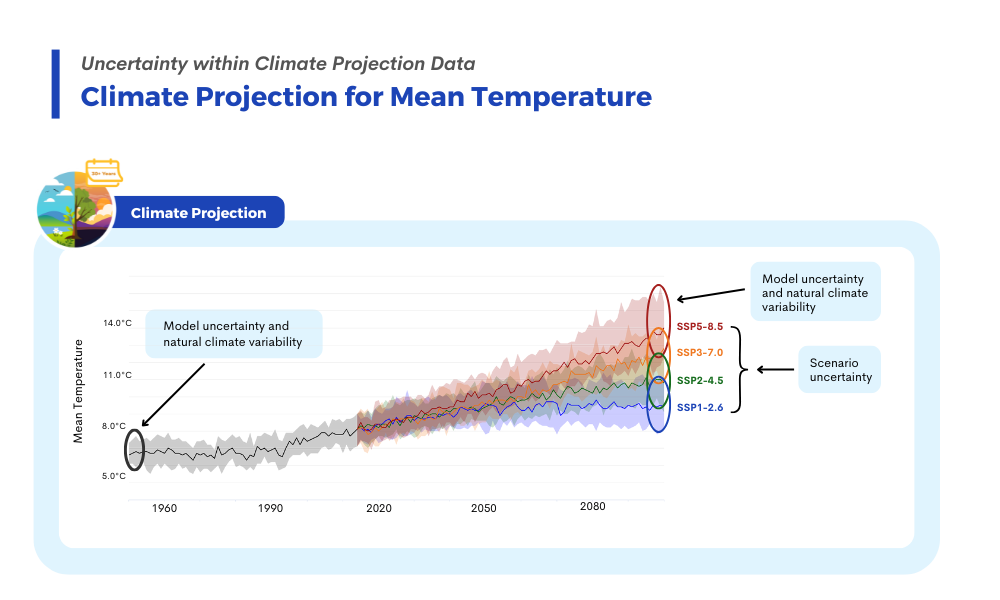Sources of predictability
Atmosphere, land, oceans, and human activities all influence the climate on timescales from days to centuries. These influences are included in climate models and provide the predictability needed to produce seasonal forecasts and climate projections, as shown in Figure 3. Different sources of predictability influence the climate more strongly on different timescales (e.g., months, seasons, decades).
Figure 3: The atmosphere, land, oceans, and human influence affect the climate on timescales from days to centuries, however their influences are felt more strongly at different timescales. Weather and climate models use these sources of predictability to produce weather forecasts, seasonal forecasts, decadal forecasts, and climate projections. Figure adapted from Merryfield et al3.
